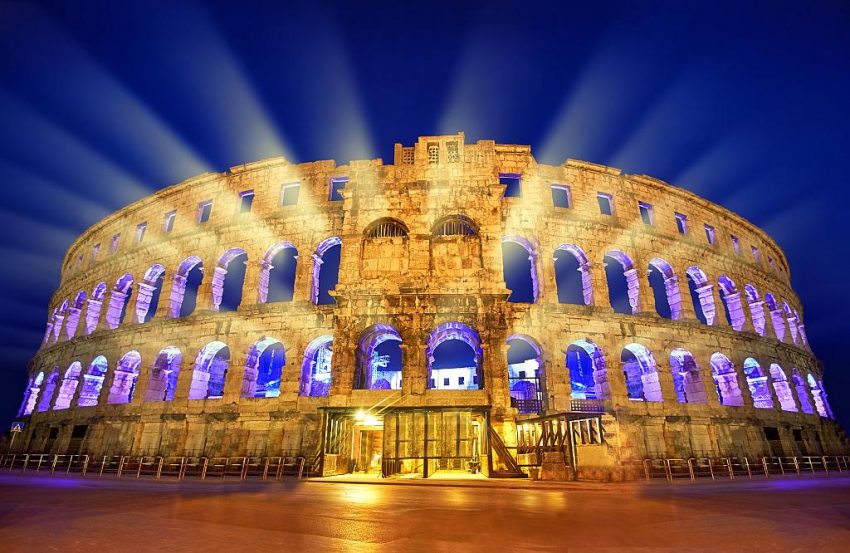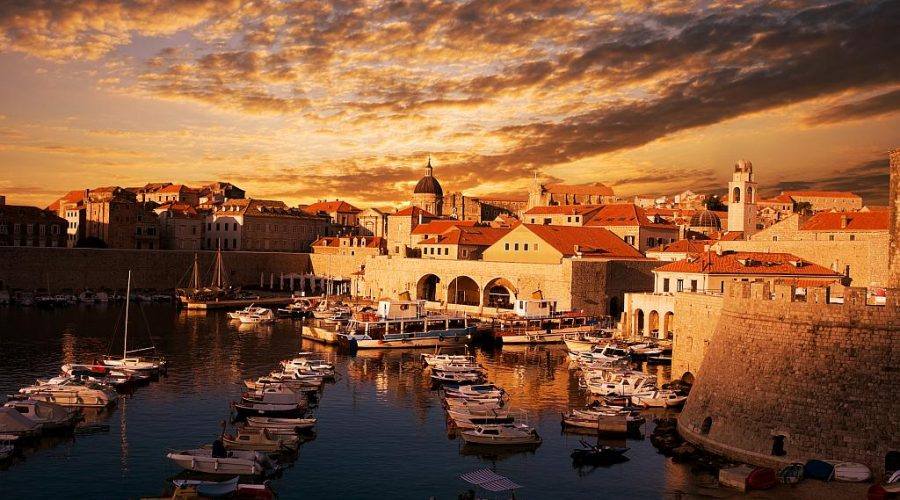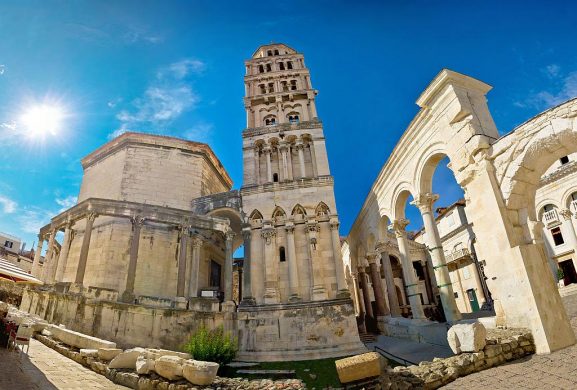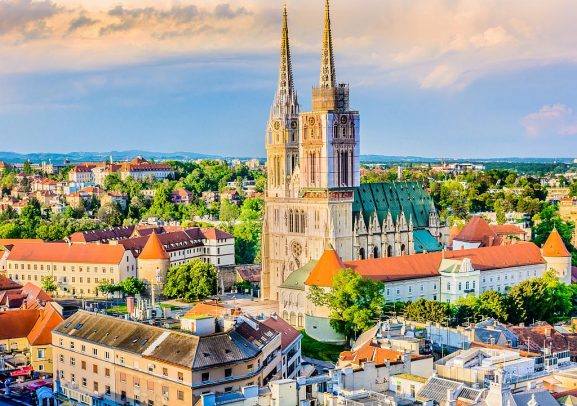Top 10 Croatia points of interest and landmarks
For all those who haven’t already visited this amazing country, we wrote a top 10 Croatia points of interest and landmarks so that you can take them into consideration when choosing your next travel destination. Croatia has become one of the Europe’s most popular tourist destination, attracting millions of tourists with its spectacular coastline, more than 1200 islands, charming inland cities, and landscapes. This tiny country on the shores of the Adriatic Sea has so much to offer, you can easily program your next amazing active holidays, relaxing vacation or a stunning voyage through its rich history.
Croatia points of interest and landmarks
1. The Old City of Dubrovnik
Often called the “Pearl of the Adriatic”, Dubrovnik is the most popular tourist destination in Croatia, attracting thousands of tourist from all over the world. Dubrovnik was founded in the 6th century, becoming a capital of Dubrovnik Republic a few centuries later and one of the most important mercantile and maritime centers on the Mediterranean. The old town is encircled by a 2 km complex of city walls from which you can enjoy a beautiful panorama of the city and the nearby islands. Don’t forget to take a cable car from the city to the Srđ mountain for even more impressive views of Dubrovnik. The old town has many interesting locations you can visit like its famous main street, Stradun, paved in marble and limestone, the Church of St. Blaise, patron saint or the Duke’s palace, Fort Lovrijenac and many other. You will absolutely love wandering around its narrow streets finding something beautiful around every corner. The old city of Dubrovnik is also a popular filming location, as many famous TV series and movies like “Game of thrones” and “Star Trek” have been set in Dubrovnik. The city is a perfect tourist destination for all who want to enjoy some impressive history locations, amazing beaches, crystal clear sea and delicious local food.
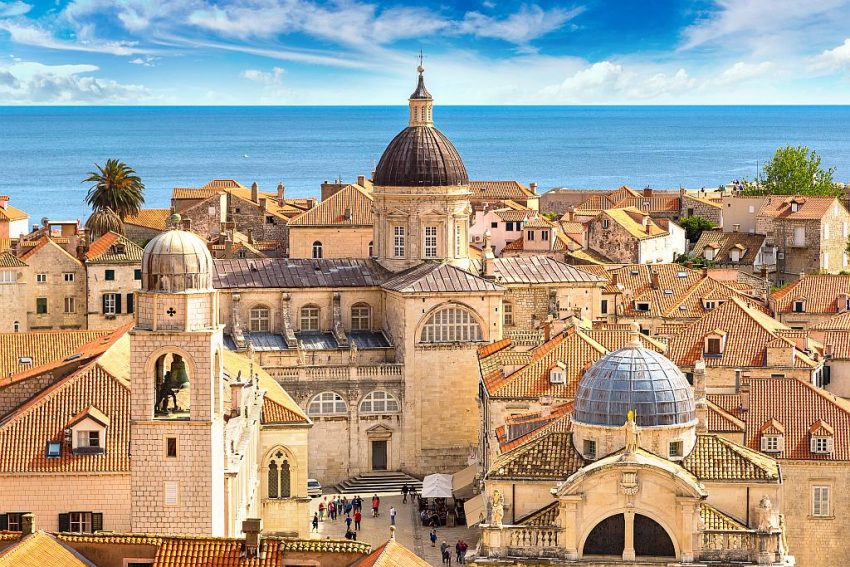
2. Plitvice Lakes National Park
Plitvice Lakes National Park is one of eight Croatian National Parks. It is the most popular National Park in Croatia and it is on the list of UNESCO World Heritage Sites. The park is famous for its chain of lakes arranged in cascades with 16 lakes divided into two groups, upper and lower lakes divided by a long lake Kozjak. The length of connected lakes is over eight kilometers and the park covers an area of almost 300 square kilometers. The water exiting from the last lower lake forms the Korana river. Lakes are connected by amazing waterfalls and cascades. The biggest waterfall called “Veliki slap” is 70 m tall. During the centuries the water has flown over the natural limestone, creating these wonderful bigger and smaller lakes by the process of tufa development. The lakes are separated by the natural dams and travertine barriers and over some barriers, you can walk the wooden paths between the lakes and admire this beauty of nature. Its trademark is the brown bear and Plitvice Lakes are home to many animal species and many unique protected plant species.
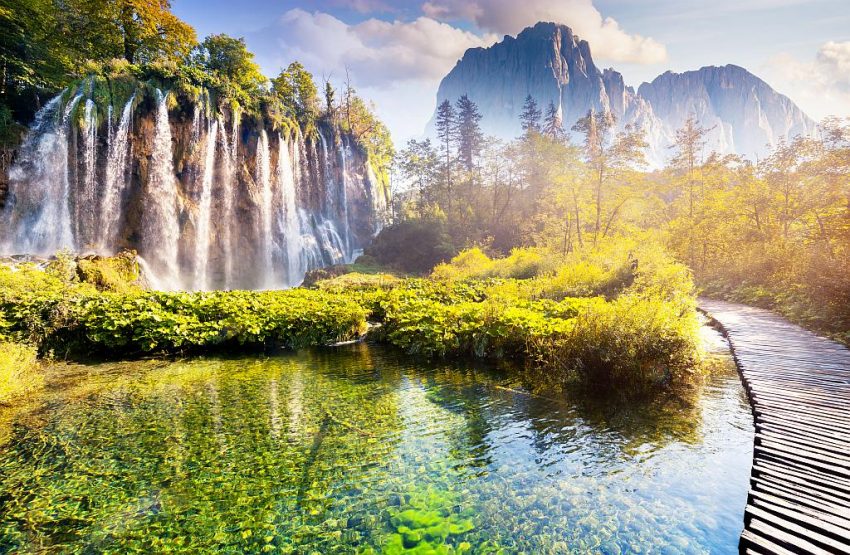
3. Diocletian’s Palace, Split
Split is the second largest city in Croatia, situated in the center of the region of Dalmatia. The city was founded more than 1700 years ago by the Roman Emperor Diocletian and his imperial palace occupies the most important part of the old town. The Palace was built in 305 A.D. as a massive structure, with its 200 meters long and 20 meters high walls. Underneath the Palace, there are Diocletian’s cellars that lead from the Riva waterfront to the Imperial square Peristil, a colonnade ornamented plaza with two sphinxes from Egypt. The cellars were used to film certain scenes for the popular TV series Game of Thrones. On the eastern side of Peristil square, there is the Cathedral of Saint Domnius, the oldest cathedral in the world, built inside the old mausoleum of the Roman Emperor. With the beachfront and palm trees right in front of the palace, Split offers the perfect Mediterranean postcard. During its long history, many cultures left their footprint still visible today on the squares and the alleys of the city center.
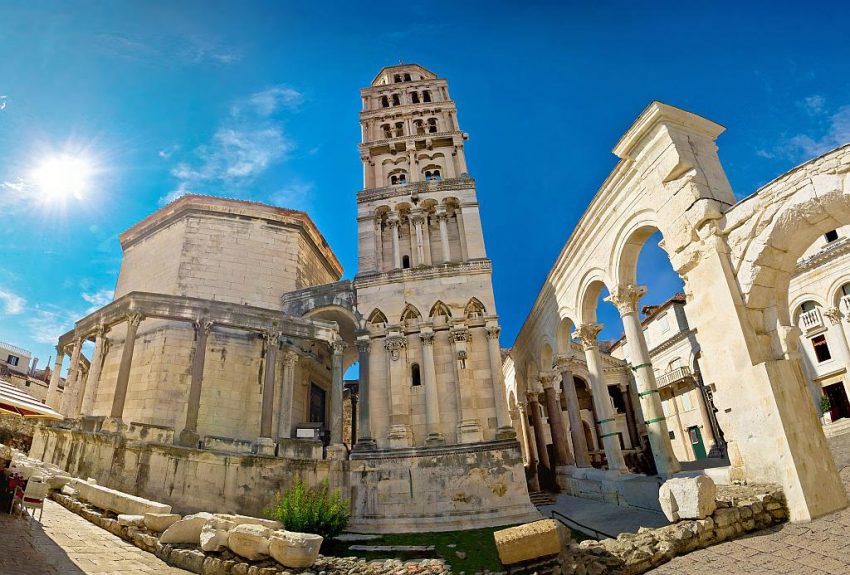
4. Zlatni rat beach, Bol
Zlatni rat (Golden Horn or Golden Cape) is one of the most beautiful beaches of the Mediterranean and a trademark of Croatian tourism. It is situated on the southern coast of the Island of Brac, less than 2 km from a lovely town of Bol. There is a charming promenade under the pine trees shade leading from the town to the beach, along which you can find many other small beaches, restaurants, bars and playgrounds for children. Zlatni rat’s elegance and allure have made it the symbol of both the island and Croatia. This fascinating 500 meters long pebble beach has a unique shape, like a tongue that stretches into the sea. The curiosity about this beach is that it changes its shape and position, depending on the wind, tide and the current. The government of Croatia protects Zlatni rat beach as a geomorphological monument. It offers perfect conditions for various sports activities like windsurfing and kitesurfing. Zlatni Rat also offers lots of other interesting things to do like beach volley, parachute rides which offers an amazing bird’s eye view of the beach and the charming town of Bol, jet ski, banana boat rides, water park children and adults and much more. There are two restaurants just a few steps from the beach, where you can enjoy local specialties under the shade of century-old pine trees.
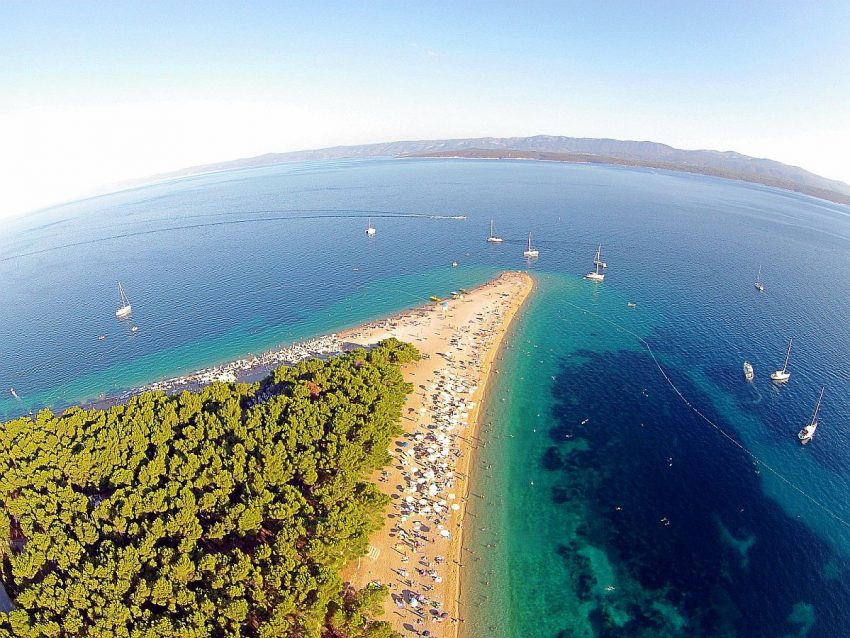
5. Gornji Grad, Zagreb
Zagreb was in the shade of Croatian coastline as a tourist destination for many years, but thanks to its famous Christmas Market which was recognized as the best in Europe for two years in a row, it became a popular destination very quickly. Gornji Grad (Upper town) used to be the town for itself from which slowly emerged Zagreb as we know it today. There are many stories and legends connected to that part of the town, the story says that in the 18th century it used to be a meeting point for witches and most of them were ordered to be killed by the Church in Holy Office. List of witches’ names is exposed in the Zagreb City Museum. The central point of Upper town is St Mark Square with its Church adored by tourists because of its multicolored tile roof. It is also the site of Croatian Parliament and many years ago it used to be the Ban’s palace. Lose yourself in its narrow streets and try to sense the old town’s atmosphere. Visit also The ban Jelačić Square, from where you can easily start exploring the long list of city’s highlights, museums, fancy bars and numerous restaurants. Another important landmark of the capital of Croatia is the Cathedral, the most monumental sacral building in Gothic style southeast of the Alps.
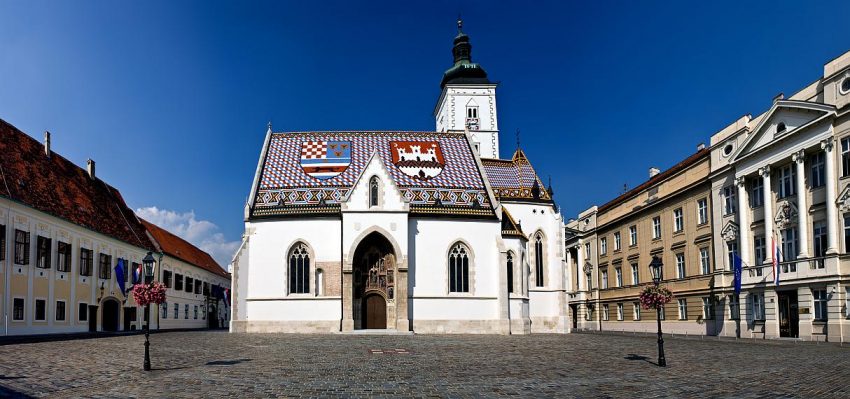
6. Medieval town of Korčula
Korčula is a small fortified town located on the northeast coast of the island of Korčula. The form of this charming historic town is determined by the form of small peninsula protruding into the sea and its connection with the island was cut off by an artificial channel. It is surrounded by the walls, built in gothic style, reinforced at the strategic points like those near the port, where major attacks were expected. The streets of the town are arranged in a herringbone pattern in order to reduce the effects of the sun and wind. The old town is the main attraction with its walls, towers, narrow streets and the wondrous architecture mainly influenced by Venetian Renaissance. Almost all town’s narrow streets are stepped, except the Charity Street, often referred as the Street of Thoughts, as one did not have to worry about the steps. Korčula has many other interesting things to see and places to visit. Just by walking through the old town you can admire numerous arches, charming narrow streets, churches and seven towers.
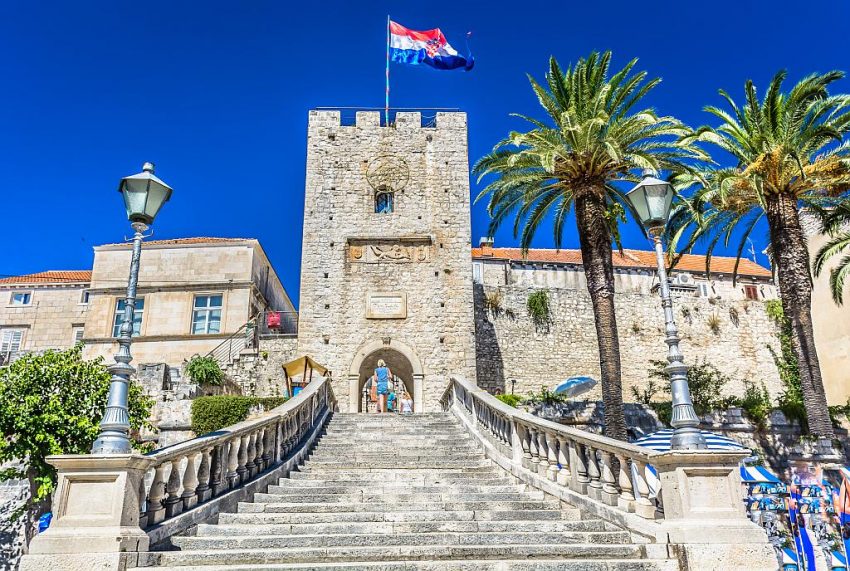
7. Croatia’s medieval castles
Croatia has many amazing medieval castles, most of them are located in the Central Croatia. Some of them built to protect the area from the Turkish invasion and others as manor houses. Most popular castles are Trakošćan and Varaždin castles located in the Varaždin county, Old Sušica castle located near the city of Rijeka, Medvedgrad located near Zagreb, Veliki Tabor castle in the Krapina-Zagorje County and Sisak Castle. Click here to read more about these castles.
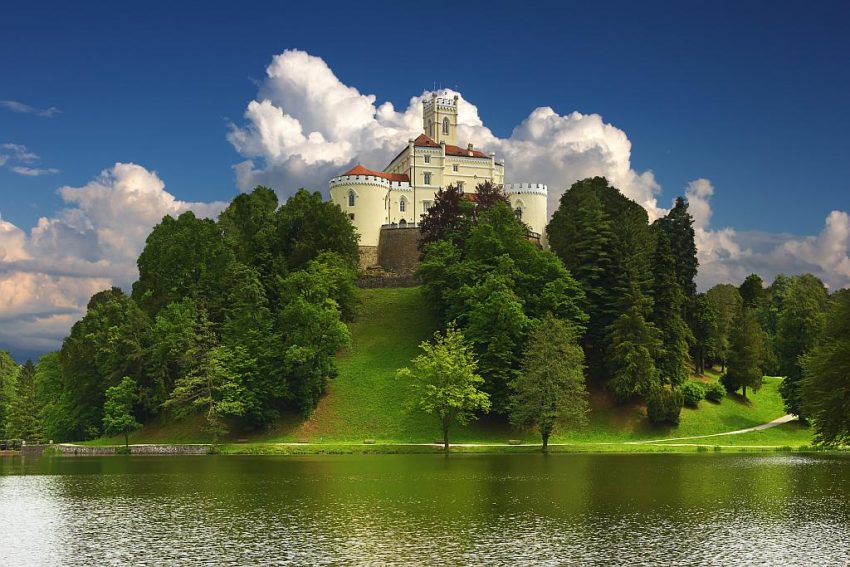
8. Hum, the smallest town in the world
Hum with its 30 (2011 Population Census) inhabitants is formally listed as the smallest town in the world. It is located in the center of Istria region, near the town of Buzet, know as a “town of truffles”. The city which is only 100 meters long and 30 meters wide holds so much of history. According to the legend, Hum was created by accident when the Giants did not have many stones left when building the cities in the valley of the Mirna River, so they decided to build this miniature city. The town’s history starts in early medieval age and it was first mentioned in documents dating back to the 12th century under the name of Cholm. The town was entirely enclosed by walls in the 11th century on the remains of an earlier fortification. The houses were constructed inside the walls and the interesting fact about Hum is that from its conception till this day almost nothing was built outside the walls, which makes Hum one of the rare well-preserved examples in the world of urban development completely within the walls of the medieval city. Hum is also known as the town of Biska, which is a traditional Istrian brandy made by a 2000 years old recipe. Another interesting fact about Hum is the custom that inhabitants preserved to this day, which is electing the mayor every year on 11th of June (The day of Hum) when all the men of the parish gather in the City Lodge engraving votes on the wooden stick.
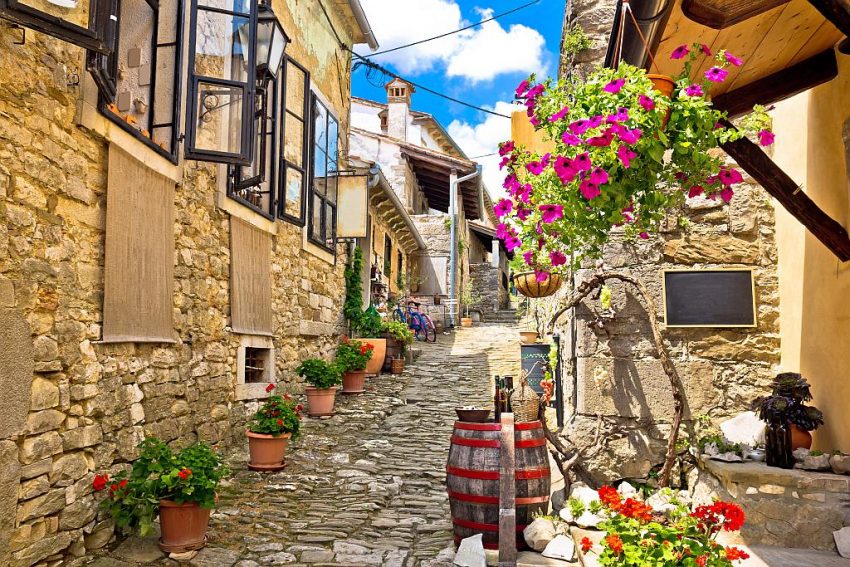
9. Brijuni National Park
Brijuni Islands (Brionian Islands) are a group of fourteen small islands in northern Adriatic, separated from the west coast of the Istrian peninsula by the Fažana Strait. The largest island is Veliki Brijun Island and it kilometers off the coast. Popular for their impressive beauty, the islands are a famous holiday resort and a Croatian National Park. There is also a Safari Park on the island od Veliki Brijuni, home to a variety of exotic animals, many of them donated as gifts from Croatian diplomatic partners like the Asian elephant and zebu from India. The island has another interesting particularity, as it is home to four sites with over 200 dinosaur footprints from the last period of the Mesozoic Era, absolutely worth visiting. On the islands, there are also other sites worth seeing, such as the ruins in Verige Bay are possible remains of the imperial Roman summer residences of 1st century A.D, well-preserved remains of St. Mary’s basilica from the 5th century and of a small church of St. Peter from the 6th century, two ancient Roman villa remains, from the 2nd Century BC and remains of a Byzantine palace. Visit also the Hill’s Fort, fortified Bronze Age settlement with preserved walls, entrance and necropolis, situated on a small hill near the Verige Bay.
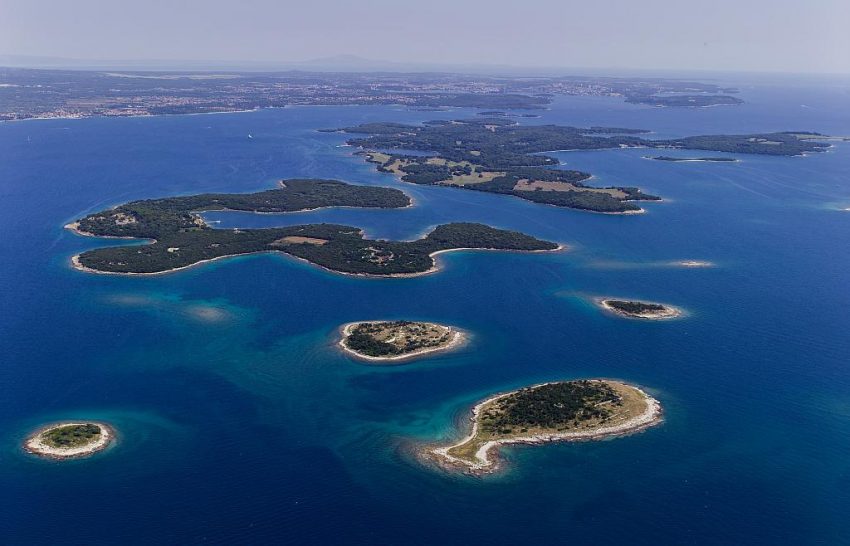
10. Roman Arena and ruins, Pula
Pula is the largest city in Istria region, Croatia, situated at the southern tip of the peninsula. Known for its long tradition of shipbuilding, tourism, and winemaking, the city also stands out among other larger Croatian cities for the rich and well-preserved Roman architecture, the amphitheater being the most famous and dominant part of it.
Other than its interesting historical background, Pula is a busy city with mild Mediterranean climate, beautiful beaches and a host to many exciting events and festivals, especially during the summer. The Arena is surely the most famous and important monument in Pula, but in Croatia as well, due to the fact that is is the sixth largest and one of the best preserved Roman amphitheaters in the world. It is situated outside the old city walls because of its size and it hosts many events such as Film Festival, Opera Season, concerts and much more. Other than the Arena, don’t forget to visit other Roman ruins in Pula like the Temple of Augustus, constructed between the year 2 BC and AD 14 and situated in the Forum, Arco dei Sergi, a triumphal arch that was originally a city gate, constructed as a symbol of victory at Actium and the Roman Floor Mosaic, an impressive floor mosaics, found in the remains of Roman houses after the World War II.
